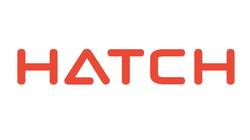Hatch Goba co-sponsors symposium on large power systems
| Hatch Goba co-sponsors symposium on large power systems | 31.5 KB | Download | |
| Impumelelo substations with boilers and heat pumps in the background. | 854.34 KB | Download | |
| Philip König, Hatch Goba, regional director, Africa, Europe & Middle East. | 6.1 MB | Download | |
| The main substation at Impumelelo, a project undertaken by RSV ENCO Hatch Goba Coal JV for Sasol Mining. | 994.46 KB | Download |
This prestigious event was co-sponsored by Hatch Goba, together with other multinationals such as ABB, which was held under the theme of ‘Development of Electricity Infrastructure in Sub-Saharan Africa’.
This is only the second time that the symposium has been held on the African continent, and the first of the new century. Symposia are held in odd-number years, in various countries where CIGRE is present, focusing on specific subjects of topical interest. The previous one took place in Cairo, Egypt in the 1980s.
The Cape Town symposium was held over five days, comprising a full day of tutorials, three days of paper presentations in two parallel sessions, and a day of technical tours. The symposium was supplemented by an exhibition that included equipment manufacturers, suppliers, construction contractors and consultants in the power industry.
The Cape Town event attracted a record 400 delegates, from Africa, Australia, Europe and America. Paper submissions were scrutinised and adjudicated by an international review panel in Paris, with Hatch Goba having a successful submission entitled ‘Safe Groundmat Design for Grid Connection Substations at Wind Energy Facilities’.
The paper was presented by Nitin Thekkumpuram Pr Eng, Hatch Goba, and co-authored by Philip König Pr Eng, CEng and Ron Coney Pr Eng, CEng, and M. Khan Pr Eng,. It focused on the location of wind energy facilities (WEF), which is often if mountainous terrain with rocky ground, resulting in high soil resistance values.
The combination of high soil resistivity and a high fault current results in an unsafe potential rise within the wind farm area, and transfer of dangerous potential to metallic structures and underground services within the WEF.
The paper from Hatch Goba presented a case study on how an integrated grounding system can prevent these unsafe conditions where soil resistivity is extremely high. This system was tailored for the specific site conditions encountered in the case study.
The WEF in question consisted of 31 wind turbines spread across local community land, delivering a total output of 93MW or 3MW per wind turbine. The grind integration of the WEF required upgrading an existing upstream substation to 132Kv, establishing a new 132/33kV substation and the interconnecting powerline infrastructure between the substations.
Each turbine in the WEF is connected to an underground collector strings, which are terminated at the medium voltage side of the new grid connection substation. The substation is equipped with two 132/33kV 50MVA transformers.
THE WEF is located in an area with very high soil resistivity due to loamy and rocky soil conditions, which was confirmed by an investigation. Using a bare copper earthing system would have resulted in very high potential gradients around the grid connection substation and unsafe touch potentials within the inhabited village area next to the substation.
To mitigate this problem, a new approach of integrated earthing using insulated cables to connect the individual wind turbine groundmats to the substation groundmat was introduced, taking into account the equivalent circuit of the whole WEF.
CIGRE (the International Council on Large Electric Systems) allow engineers and specialists from all around the world to exchange information and enhance their knowledge related to power systems.
Hatch Goba’s capabilities in this sector include wind assessments, feasibility studies, site research, engineering design services, project management, interconnection services, environmental assessment and permitting services, construction supervision and due diligence.
Hatch Goba also integrates wind and hydro projects into single generating systems, and provides decision-support software and expert analysis to ensure optimum system efficiency and reliability.
Ends
Notes to the editor
To download hi-res images for this release, please visit http://media.ngage.co.za and click the Hatch Goba link to view the company’s press office.
About Hatch Goba
Hatch Goba supplies process and business consulting, information technology, engineering, procurement and project and construction management and operational services to the mining, metallurgical, energy and infrastructure industries.
Media Contact
Gerhard Hope
NGAGE Public Relations
Phone: (011) 867-7763
Fax: 086 512 3352
Cell: 078 824 8723
Email: gerhard [at] ngage [dot] co [dot] za
Web: www.ngage.co.za
Browse the NGAGE Media Zone for more client press releases and photographs at http://media.ngage.co.za

